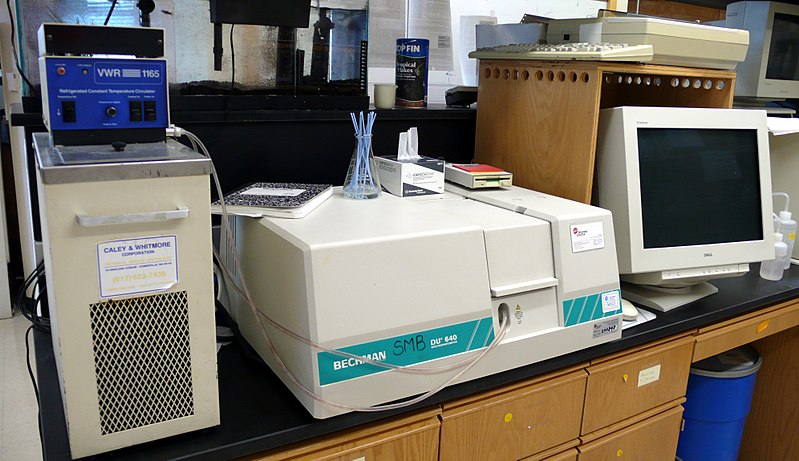The key difference between continuous assay and stopped assay is that a continuous assay gives a continuous reading of activity, whereas in stopped assay, the readings are taken by stopping the reaction.
Continuous assay and stopped assay are important terms in analytical applications, specifically in industrial processes. Stopped assay is also known as a discontinuous assay because, in this method, the readings are not taken continuously. Therefore, continuous assay and stopped assay are opposite of each other. Typically, the term assay is used in biochemistry to refer to biochemical reactions that involve enzymes.
CONTENTS
1. Overview and Key Difference
2. What is Continuous Assay
3. What is Stopped Assay
4. Continuous Assay vs Stopped Assay in Tabular Form
5. Summary – Continuous Assay vs Stopped Assay
What is Continuous Assay (Endpoint Assay)?
Continuous assay is an analytical method where the readings are taken continuously without stopping or holding the reaction. In other words, in a continuous assay, the course of the reaction is essentially followed continually until its completion. Therefore, sometimes this method is also known “endpoint assay.” In this method, we can measure enzyme activity via the quantity of substrate that is consumed or the amount of product that forms during the reaction when considering a fixed period of time.

Figure 01: Chemiluminescence
Typically, in this type of assay, the rate of reaction is given without any further work. Some different types of continuous assays include spectrometric assays, fluorometric assays, colorimetric assays, chemiluminescent assays, and microscale thermophoresis.
What is Stopped Assay (Discontinuous Assay)?
Stopped assay is a method of analytical chemistry where readings are taken discontinuously by stopping or holding the reaction. In enzymatic assays, the samples are taken from an enzyme reaction at intervals during a stopped assay. Thereafter, the production of the desired product or the amount of remaining substrate or the substrate consumption can be measured in the taken samples to get a reading. This assay is also known as “discontinuous assay.”

Figure 02: Spectrophotometer
There are different types of stopped or discontinuous assays, including radiometric assays, chromatographic assays, etc. In common, the factors that affect the readings in an assay include salt concentration, effects of temperature, effects of pH, substrate saturation, and level of crowding.
What is the Difference Between Continuous Assay and Stopped Assay?
Continuous assay and stopped assay are important terms in analytical applications, specifically in industrial processes. The continuous assay is an analytical method where the readings are taken continuously without stopping or holding the reaction. Whereas, the stopped assay is a method of analytical chemistry where the readings are taken discontinuously by stopping the reaction. Therefore, the key difference between continuous assay and stopped assay is that a continuous assay gives a continuous reading of activity, whereas, in stopped assay, the readings are taken by stopping the reaction.
The below infographic presents the differences between continuous assay and stopped assay in tabular form for side by side comparison.
Summary – Continuous Assay vs Stopped Assay
Continuous assay and stopped assay are important terms in analytical applications, specifically in industrial processes. The key difference between continuous assay and stopped assay is that a continuous assay gives a continuous reading of activity, whereas, in stopped assay, the readings are taken by stopping the reaction. In addition, the stopped assay is also known as a discontinuous assay because in this method, the readings are not taken continuously. Therefore, the continuous assay and stopped assay are opposite of each other.
Reference:
1. “What Are Enzyme Kinetic Assays? an Overview.” Tip Biosystems, 20 Jan. 2022.
Image Courtesy:
1. “Luminol2006” By David Muelheims (David Mülheims, Germany) – Self-photographed (Own work) (CC BY-SA 2.5) via Commons Wikimedia
2. “DU640 spectrophotometer” By TimVickers – Own work (Public Domain) via Commons Wikimedia
ncG1vNJzZmivp6x7pbXFn5yrnZ6YsqOx07CcnqZemLyue9ahmK1lmah6tbTEZpuinpaav6a6wp5km52krLKmuoycpqesmaPCsMHSZpisq5GueqK6w2aqraegpbKlecCsqpqxXw%3D%3D